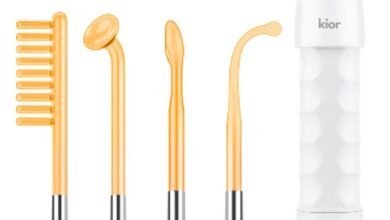Optimal Signal Transmission in RF & Microwave PCB Design

Understanding RF and microwave PCB design
Designing RF and Microwave PCBs presents a unique challenge and strategy to a designer. The main purpose of any design is to enable an optimal signal transmission with minimum losses as well as interference. These include radar systems, wireless communications, and telecommunications among other high-frequency applications where RF and microwave PCBs are vital. The complexity involved in these designs calls for the knowledge of both the electrical and physical properties of PCB materials and components.
The selection of suitable materials is key in the development of PCBs for RF and microwave applications. This is large because high-frequency signals are highly sensitive to the dielectric characteristics of the PCB substrate. The preference for low dielectric constant (Dk) and low dissipation factor (Df) materials is based on their ability to minimize signal loss and distortion. Moreover, it is important that the layout and routing depicted by the PCB be accurate enough to minimize parasitic capacitance as well as inductance that causes attenuation.
Importance of proper Pcb layout
The position of PCB layout engineer is very significant in RF and microwave PCB design. These engineers have to take into account factors like trace width, spacing, and position of parts to reduce losses on the signal. Care must be taken to ensure that the layout minimizes the consequences of electromagnetic interference (EMI) and crosstalk between the traces.
Another important approach in PCB development is the usage of ground planes as well as shielding. A ground plane offers low resistance for the return current, which is useful in mitigating noise and realizing better signal quality. Additional measures include the use of metal cabinets or electrical copper traces to reduce the effects of EMI. The choice of decoupling capacitors and the employment of vias to interconnect various layers of the PCB also have a considerable impact on the signal quality.
Signal integrity and high-frequency design
Signal integrity is a major concern in RF and microwave PCB design. High-frequency signals cause reflections and transmission losses that deteriorate the signal quality. To avoid such problems, designers need to consider impedance matching and proper techniques of termination. Impedance matching enables the signal to be transmitted without much reflection while proper termination assists in using the signal energy by preventing reflection.
Knowledge from Vlsi design engineering can also be used in the RF and microwave PCB design to enhance signal integrity. Some of these principles include differential signalling, controlled impedance traces, and component placement. Differential signalling is a technique that utilizes two signals that are opposite to each other to minimize noise and enhance the quality of the received signal. These are special types of traces whose characteristics are predetermined to reduce signal reflections. Positioning components like filters and amplifiers is critical as the signal path length has to be made as short as possible to avoid too much loss.
Thermal management in RF and microwave PCBs
Another important consideration in the development of PCB is thermal management, especially for RF and microwave applications. High-frequency signals produce heat, which is undesirable for PCB performance and durability. Proper thermal control measures are required to reduce the amount of heat and to achieve proper working temperatures.
Thermal vias and heat sinks are employed in RF and microwave PCB designs for controlling the dissipation of heat. Thermal vias are holes made on various layers of the PCB that help dissipate heat from the heating elements. Heat sinks are metal parts connected to the PCB to release heat into the atmosphere. It is the responsibility of the PCB layout engineer to incorporate these techniques of thermal management into the design to have optimum signal transmission.
Advanced simulation and testing techniques
Simulation and testing are key aspects of VLSI design engineering and RF and microwave PCB design. EM simulators and signal integrity analyzers which are high-end tools are used to model and evaluate the design of the PCB. These tools assist in the early detection of risks and improve the design before the actual construction begins.
Different testing methods like TDR and VNA methods are employed to evaluate the performance of the fabricated PCB. TDR checks the continuity of the PCB traces and its impedance while VNA checks the frequency response and signal integrity of the PCB. These testing techniques assist in delivering information back to the PCB layout engineer to enable him/her to make corrections and guarantee appropriate signal transmission.
Read also: Full Stack Developers: Essential Skills and Technologies for Modern Web Applications
Integration of VLSI design engineering
The incorporation of VLSI design engineering with RF and microwave PCB design has several advantages. VLSI design principles deal with the layout of electronic circuits at the transistor level, which can be used to enhance the efficiency of the high-frequency PCB layout for power efficiency. Several techniques like multi-layer routing and high-density interconnects of VLSI technology can be employed to improve the RF and microwave PCBs.
To develop high-frequency PCBs, it is crucial to have the PCB layout engineer working closely with VLSI design engineers. This integration also guarantees the integrity of the physical configuration of the PCB since it is created in tandem with the electrical design. The inclusion of VLSI design engineering principles in the development of RF and microwave PCB makes it possible to develop high-frequency circuits that are more efficient and reliable.
Conclusion
RF and microwave PCB design is a complex and challenging field requiring deep comprehension of high-frequency signal transmission and advanced design techniques. A critical position held by a PCB layout engineer ensures the best possible signal integrity with minimal losses as well as interference. Correct choice of material, efficient thermal control, and inclusion of principles in VLSI design engineering are the essential approaches for achieving success in RF and microwave PCB development.
Using state-of-the-art simulation and characterization methodologies, designers can fine-tune their PCB designs and have confidence in their performance at higher frequencies. The integration of PCB layout engineers and VLSI design engineers takes the design to the next level to produce efficient and high-performing RF and microwave circuits.





